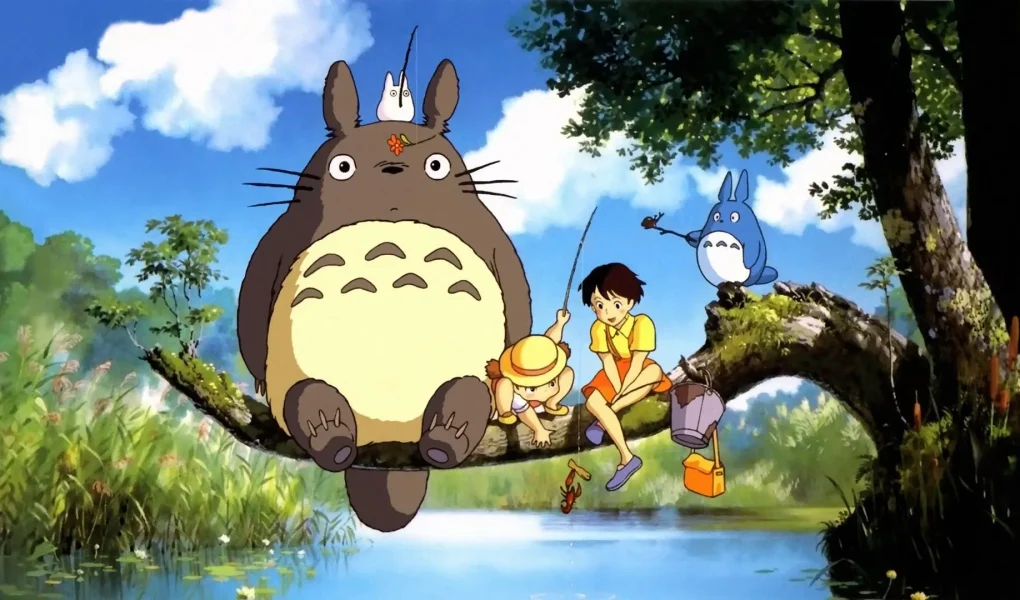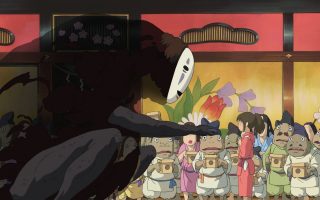kickstand-project.org – My Neighbor Totoro (1988), directed by Hayao Miyazaki and produced by Studio Ghibli, is one of the most beloved animated films in the world. With its vibrant storytelling, enchanting characters, and themes of innocence and childhood, the film has become a timeless classic, cherished by audiences of all ages. Unlike many other animated films, My Neighbor Totoro eschews grand adventures or dramatic conflicts, focusing instead on the simple joys of nature, family, and childhood imagination.
The film is a gentle exploration of the bonds between sisters, the magic of rural Japan, and the serene power of nature. With its unique blend of whimsy, heart, and beautiful animation, My Neighbor Totoro has captivated generations of viewers and remains one of Studio Ghibli’s most iconic works. Through its charming characters and lush, dreamlike visuals, the film evokes a sense of wonder that resonates long after the credits roll.
Plot Overview: Two Sisters and a Forest Spirit
Set in 1950s Japan, My Neighbor Totoro follows the story of two young sisters, Satsuki (voiced by Noriko Hidaka) and Mei (voiced by Chika Sakamoto), who move with their father to a rural countryside home. They are settling into their new life, as their mother is in the hospital, and their father works as a professor at a nearby university. The film’s tone is light and full of exploration, reflecting the joy and curiosity of childhood.
Soon after settling in, Mei, the younger sister, discovers a mysterious creature in the nearby woods—an enormous, fluffy, and lovable forest spirit named Totoro (voiced by Frank Welker in the English dub). Totoro, who can only be seen by the sisters, is both a guardian of the forest and a magical creature who introduces them to a world of imagination and wonder. As the story unfolds, the two sisters form a close bond with Totoro, embarking on small but magical adventures, such as riding the Catbus—a giant cat-shaped bus that transports them to new and exciting places.
While My Neighbor Totoro primarily focuses on the sisters’ adventures with their newfound friend, the film also weaves in a poignant storyline about the importance of family and the strength of love in times of uncertainty. As Satsuki and Mei struggle with the worry about their mother’s health, their bond with each other, their father, and the comforting presence of Totoro helps them find solace and joy amidst difficult times.
Themes: Childhood, Imagination, and the Power of Nature
At its core, My Neighbor Totoro is a celebration of childhood—the wonder, freedom, and innocence that come with being young. The film captures the pure curiosity and open-mindedness of children, who see the world around them as a place filled with possibilities and hidden magic. The relationship between the two sisters is portrayed with warmth and authenticity, highlighting the natural sibling dynamic of caring, teasing, and supporting each other. Their interactions are charming and relatable, creating an emotional foundation for the story that resonates with audiences of all ages.
One of the film’s central themes is the power of imagination. Totoro and the magical creatures of the forest serve as representations of the childlike ability to see and believe in things beyond the ordinary world. For the sisters, Totoro represents a fantastical escape from their worries and a way to cope with the uncertainty of their mother’s illness. This magic allows them to maintain their sense of wonder, even when faced with the challenges of life. The film encourages viewers to embrace imagination and the idea that the world is full of unseen, magical forces, if only we are open enough to perceive them.
Another important theme is the relationship between humans and nature. The rural setting, with its lush forests, meadows, and fields, is integral to the film’s peaceful atmosphere. The natural world is not just a backdrop for the story—it is a central character in itself. Totoro, as the spirit of the forest, symbolizes the deep connection between humans and nature, suggesting that harmony and mutual respect are essential for both survival and well-being. The film’s gentle portrayal of nature as something alive with magic offers a stark contrast to the urbanized, industrial world often depicted in other films.
The film also touches on themes of resilience and hope. As the girls navigate the challenges in their lives, including their mother’s illness and the struggles of rural life, they find strength in each other, their family, and the magic that surrounds them. My Neighbor Totoro emphasizes that even in difficult times, moments of wonder and joy can offer comfort and healing.
Characters: Innocence, Love, and the Magic of Childhood
The characters in My Neighbor Totoro are endearing, each contributing to the film’s heartwarming tone and emotional depth.
- Satsuki: The older sister, Satsuki, is caring, responsible, and mature for her age. As she tries to balance her responsibilities as a caretaker for Mei with the worry over their mother’s health, Satsuki’s character embodies the protective love that often defines older siblings. She is the emotional anchor of the film, providing strength to her younger sister and maintaining optimism in the face of hardship.
- Mei: Mei, the younger sister, is curious, adventurous, and full of youthful energy. Her boundless imagination and wide-eyed wonder add a sense of magic to the story, as she is the first to discover Totoro and form a connection with him. Mei’s innocence and ability to embrace the unknown make her an unforgettable character, representing the purity and joy of childhood.
- Totoro: Totoro, the titular character, is a large, furry, and friendly forest spirit. With his huge eyes and playful demeanor, he has become one of the most iconic figures in Japanese animation. While he is mostly silent, his presence is comforting and reassuring, providing a sense of safety for the sisters as they navigate their challenges. Totoro’s role as a protector of the forest is symbolic of the deeper connection between humans and the natural world, offering a silent yet powerful message of environmental stewardship.
- The Father: The girls’ father, a kind and understanding man, is supportive of his daughters throughout the film. He encourages their imaginations and is empathetic to their concerns about their mother. While he is more of a background character in the film, his loving presence is crucial to the emotional core of the story.
- The Catbus: One of the more whimsical characters in the film, the Catbus is a large, magical cat with a bus-like body that the girls ride during their adventures with Totoro. The Catbus adds an element of fantasy to the film, contributing to the sense of wonder that permeates the story.
Animation and Art Style: A World of Beauty and Whimsy
The animation in My Neighbor Totoro is a beautiful and captivating work of art. The film’s lush landscapes, filled with vibrant greenery, wide open spaces, and meandering streams, perfectly capture the beauty of rural Japan. Studio Ghibli’s attention to detail is evident in the intricacy of the natural settings, with each frame designed to evoke the peaceful and serene atmosphere of the countryside.
The character designs are simple yet charming, with soft, rounded shapes that enhance the feeling of warmth and comfort. Totoro, with his large, fluffy body and gentle eyes, has become one of the most recognizable and beloved characters in animation history. The other magical creatures, such as the small, dust-like spirits that follow Mei and the Catbus, further emphasize the whimsical nature of the story.
The animation style complements the film’s themes of innocence and wonder, with each movement feeling fluid and natural. The use of color is particularly striking—bright greens, yellows, and blues dominate the color palette, contributing to the film’s cheerful, hopeful tone. The visual elements of My Neighbor Totoro work in harmony with the narrative, creating a world that feels alive with magic and possibility.
Music and Soundtrack: A Light and Playful Score
The film’s music, composed by Joe Hisaishi, is one of its defining features. Hisaishi’s score for My Neighbor Totoro is light, joyful, and filled with a sense of playfulness that mirrors the film’s whimsical nature. The iconic theme song, which includes the refrain “Tonari no Totoro” (“My Neighbor Totoro”), has become synonymous with the film itself and is instantly recognizable to fans around the world. The soundtrack’s gentle melodies and soothing tones perfectly complement the film’s quiet, reflective moments and magical adventures.
The music not only adds to the enchanting atmosphere of the film but also enhances the emotional depth of the characters’ experiences. Whether it’s the whimsical sounds accompanying the magical sequences or the more somber tones during the moments of worry about their mother, the music adds an emotional layer that brings the story to life.
Legacy: A Timeless Classic for All Ages
My Neighbor Totoro is widely regarded as one of the greatest animated films ever made. Its gentle storytelling, stunning animation, and universal themes of childhood, family, and nature have earned it a dedicated global fanbase. The film’s cultural impact has been significant, with Totoro becoming an iconic figure in both Japanese pop culture and around the world. Totoro’s image is used in everything from merchandise to theme parks, making him one of the most recognizable characters in animation history.
Beyond its commercial success, My Neighbor Totoro has also earned critical acclaim for its emotional depth and subtle exploration of the human condition. It is often cited as an essential work for those interested in animation, film, or storytelling in general, as it demonstrates the power of simplicity in conveying complex emotions.
Studio Ghibli’s ability to create a film that resonates with both children and adults is part of what makes My Neighbor Totoro so enduring. The themes of love, imagination, and nature are timeless, and the film continues to be a source of comfort and joy for viewers of all ages.
Conclusion: A Celebration of Childhood Wonder
My Neighbor Totoro (1988) is a heartwarming and magical tale that reminds us of the beauty and simplicity of childhood. Its gentle, tender storytelling and breathtaking animation make it a beloved classic that will continue to inspire and enchant viewers for generations to come. Hayao Miyazaki’s masterpiece captures the spirit of innocence, imagination, and the deep connection between humans and nature, offering a timeless celebration of the wonders of life.


